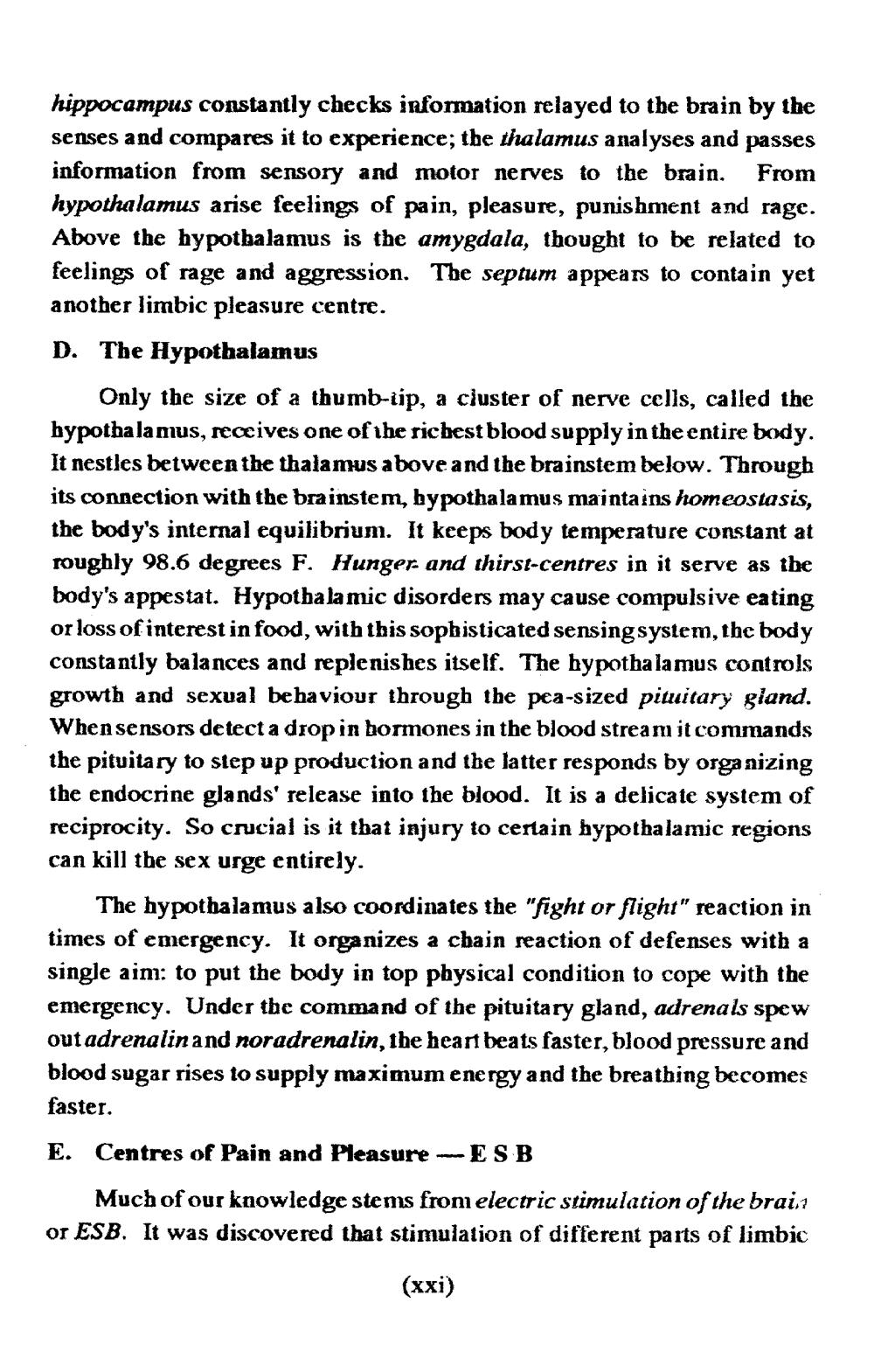________________
hippocampus constantly checks information relayed to the brain by the senses and compares it to experience; the thalamus analyses and passes information from sensory and motor nerves to the brain. From hypothalamus arise feelings of pain, pleasure, punishment and rage. Above the hypothalamus is the amygdala, thought to be related to feelings of rage and aggression. The septum appears to contain yet another limbic pleasure centre. D. The Hypothalamus
Only the size of a thumb-tip, a cluster of nerve cells, called the hypothalamus, receives one of the ricbest blood supply in the entire body. It nestles between the thalamus above and the brainstem below. Through its connection with the brainstem, bypothalamus maintains homeostasis, the body's internal equilibrium. It keeps body temperature constant at roughly 98.6 degrees F. Hunger and thirst-centres in it serve as the body's appestat. Hypothalamic disorders may cause compulsive eating or loss of interest in food, with this sopbisticated sensing system, the body constantly balances and replenishes itself. The hypothalamus controls growth and sexual behaviour through the pea-sized pituitary gland. When sensors detect a drop in bormones in the blood stream it commands the pituitary to step up production and the latter responds by organizing the endocrine glands' release into the blood. It is a delicate system of reciprocity. So crucial is it that injury to certain hypothalamic regions can kill the sex urge entirely.
The hypothalamus also coordinates the "fight or flight" reaction in times of emergency. It organizes a chain reaction of defenses with a single ain: to put the body in top physical condition to cope with the emergency. Under the command of the pituitary gland, adrenals spew out adrenalin and noradrenalin, the heart beats faster, blood pressure and blood sugar rises to supply maximum energy and the breathing becomes faster. E. Centres of Pain and Pleasure -- ESB
Much of our knowledge stems from electric stimulation of the brain or ESB. It was discovered that stimulation of different parts of limbic
(xxi)




